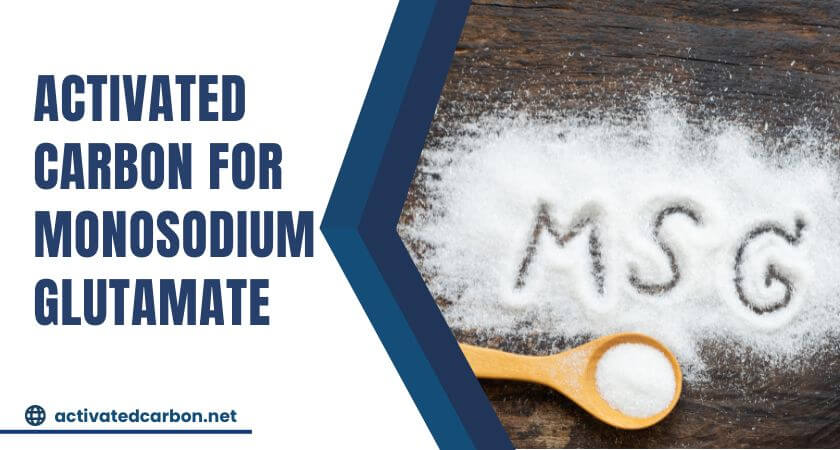
Monosodium glutamate (MSG), as a widely used flavor enhancer, is an indispensable part of our daily diet. Among the various processes involved in MSG production, decolorization filtration stands out as one of the most crucial stages.
This paper will focus on the application of specialized activated carbon in the decolorization filtration process of MSG production.
What is Monosodium Glutamate (MSG)?
Monosodium glutamate (MSG), also known as sodium glutamate, is the sodium salt of glutamic acid. MSG, a common flavor enhancer, represents the purest form of umami (the fifth taste). Widely utilized to intensify the savory taste in sauces, meat broths, soups, and many other foods, it can also serve as a partial substitute for salt, with only one-third of the sodium content.
How is MSG Produced?
For centuries, fermentation has been employed by humans as a method to preserve food and enhance its flavor. Most MSG is produced through the fermentation of plant-based raw materials such as sugarcane, sugar beets, cassava, or corn.
The process involves extracting glucose from sugarcane, which is then introduced into fermentation tanks with added microbial cultures. These microorganisms consume glucose, releasing glutamic acid. After neutralization, the solution containing MSG is decolored and filtered to obtain a pure MSG solution. Crystallization and drying follow, resulting in the production of MSG.
Decolorization filtration is a critical step in MSG production, influencing not only the color but also directly impacting the purity of the taste. Activated carbon, as an excellent adsorbent, plays a crucial role in this process.
Application of MSG Activated Carbon
Specialized activated carbon for MSG is primarily employed in the industry to continuously decolorize the mother liquor of MSG through filling and adsorption towers. This enhances the quality of MSG, as the activated carbon exhibits rapid adsorption and aids in coagulation filtration.
MSG, being a preservative produced through fermentation, may retain undesirable mixed molecules that need removal. Activated carbon proves to be an efficient solution to this issue.
The main function of activated carbon in MSG production is to adsorb impurities, remove pigments, assist in liquid filtration, and facilitate product crystallization.
Our Offered Activated Carbon
For such purposes, we provide wood powder-activated carbon tailored for MSG production. This activated carbon effectively adsorbs water-soluble organic compounds, benzene, and phenolic chemicals, delivering excellent results in pigment and off-flavor removal.
Here are some parameters of the activated carbon (dimensions can be customized based on specific requirements):

Wood Based Activated Carbon
- Particle Size: 100mesh, 200mesh, 325mesh
- MB: 150-260mg/g
- Iodine Value: 600-1200mg
Do you plan to purchase activated carbon?
Final Thoughts
Due to the complexity of the adsorption processes, principles, and reaction conditions involved in activated carbon’s role in MSG production, coupled with variations in production processes and equipment among MSG manufacturers, the ultimate decolorization efficiency can be influenced.
Should you have any ideas or inquiries, please feel free to contact us. We are here to provide you with the most professional solutions.